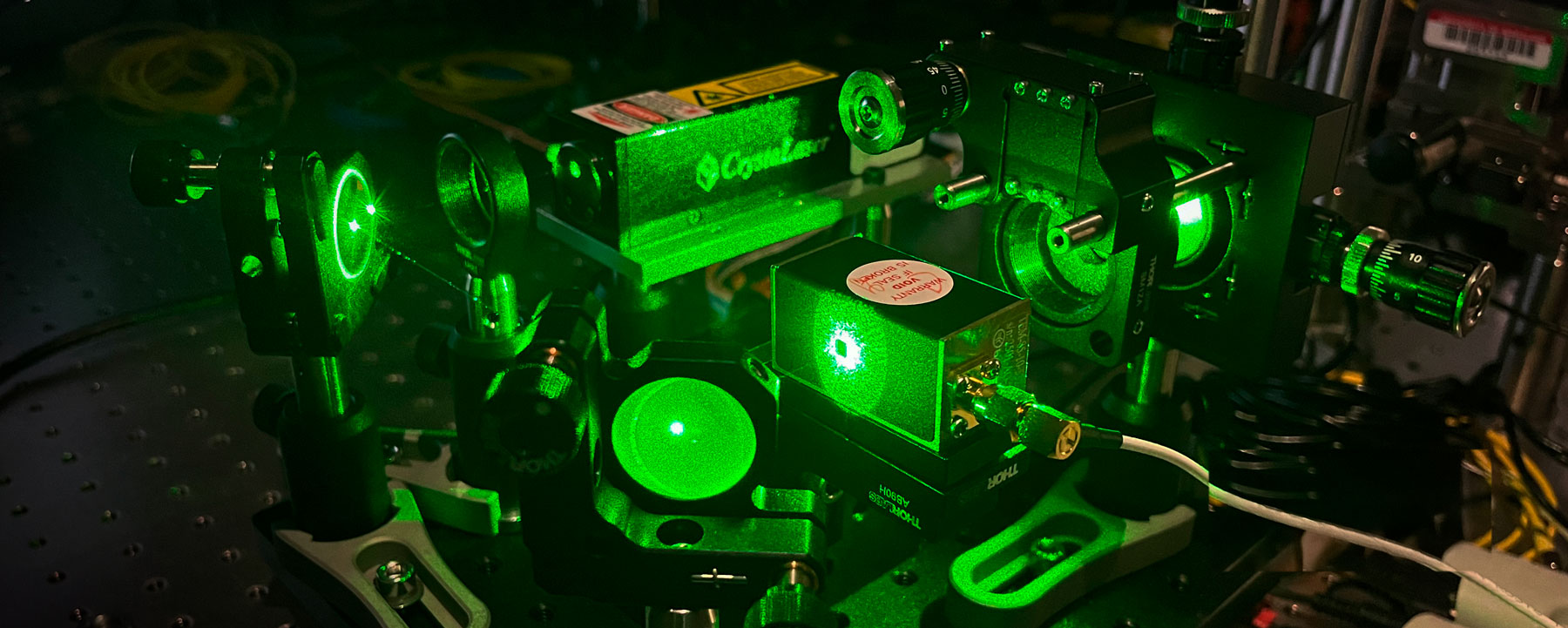
Welcome to the Quantum Photonics Laboratory at the University of Maryland. We are part of the Joint Quantum Institute and the Institute for Research in Electronics and Applied Physics. We are working to develop quantum technology based on nanoscale photonic and semiconductor devices for applications in quantum computation, communication, and sensing.
Zhouchen Luo
Research Areas:
Quantum photonic structures
Where are they now?:
Nokia
UMD to Lead $1M NSF Project to Develop a Quantum Network
The National Science Foundation (NSF) has awarded $1 million to a multi-institutional team led by JQI Fellow Edo Waks, who is also a professor of electrical and computer engineering at the University of Maryland (UMD) and associate director of the Quantum Technology Center (QTC); JQI Fellow Norbert Linke, who is also an assistant professor of physics at UMD and a QTC Fellow; Mid-Atlantic Crossroads (MAX) Executive Director Tripti Sinha; and co-PI’s Dirk Englund of the Massachusetts Institute of Technology and Saikat Guha of the University of Arizona, to help develop quantum interconnects for ion trap quantum computers, which are currently some of the most scalable quantum computers available.
Sabyasachi's work on topological resonator appeared in PRB editor's suggestion.
Topological physics has introduced a modern design principle in optics, providing build-in protection to specific types of disorder. This work demonstrates how such principles could be used to create a topological resonator in nanophotonic crystals so as to enable chiral light-matter interaction in the context of cavity quantum electrodynamics.
Subhojit's work on rare earth integrated photonics appeared in Nano letters.
Details of the work can be found at 10.1021/acs.nanolett.9b04679
Synthetic Magnetism Leads Photons on a 2D Quantum Walk
Randomness governs many things, from the growth of cell colonies and the agglomeration of polymers to the shapes of tendrils that form when you pour cream into a cup of coffee.Since as early as 1905, scientists have described these seemingly unrelated phenomena in a unified way: as random walks. By imagining that individual particles or molecules are constantly taking steps in a random direction, researchers have successfully modeled many of the complexities of classical physics.More recently, scientists have brought the idea of a random walk to the quantum world, where the “walkers” can exhibit nonclassical behaviors like quantum superposition and entanglement. These quantum random walks can simulate quantum systems and may eventually be used to implement speedy quantum computing algorithms. However, this will require the walker to move in multiple dimensions (2D and higher), which has been difficult to achieve in a manner that is both practical and scalable.Quantum walks that use photons—the quantum particles of light—are particularly promising, since photons can travel long distances as energy in wave form. However, photons don’t carry an electric charge, which makes it difficult to fully control their motion. In particular, photons won’t respond to magnetic fields—an important tool for manipulating other particles like atoms or electrons. To address these shortcomings, researchers at the Joint Quantum Institute (JQI) have adopted a scalable method for orchestrating 2D quantum random walks of photons—results that were recently published in the journal Physical Review Letters. The research team, led by JQI Fellows Edo Waks and Mohammad Hafezi, developed synthetic magnetic fields in this platform that interact with photons and affect the movement of photonic quantum walkers.
Shahriar has been awarded ECE Distinguished Dissertation Award
The Department of Electrical and Computer Engineering (ECE) has selected Shahriar Aghaeimeibodi as a recipient of the 2019 ECE Distinguished Dissertation Award.